When you say Narita, many people probably think of Naritasan Shinshoji Temple, but it is not the only thing to see. In Narita, there are many people who provide hospitality to visitors, and I would like you to know about them. Here, we will introduce them to you as “People of Narita”!
Our guest this time is Yukihiro Tsunoda, president of the "The Rass Chijin Railway Society". He is working to run a real steam locomotive at Narita Yume Farm. We spoke to him in detail about why the locomotive is running at Yume Farm, its appeal, and his goals for the future.
ーFirst, please tell us what kind of activities you are involved in.ー
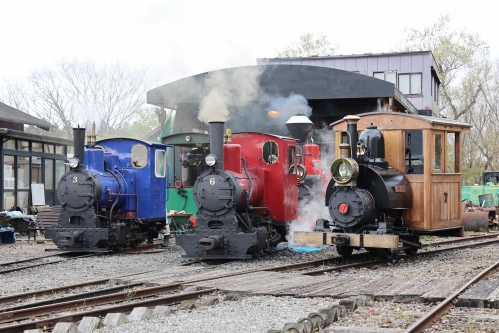
We are working to preserve the light railroads with steam locomotives running on them.
It's been more than 50 years since the light railroads disappeared. Usually, when we talk about preserving a railroad, we are talking about a "preserved railroad," but what we are doing is a "creative railroad," one that we are creating. There was never a railroad on this ranch in the first place.
This year marks the 50th year since we started our activities to show the atmosphere of the good old days when steam locomotives were running to the people of the future.
ーIs your main activity to run steam locomotives?ー
The basic activity is to run the steam locomotives, but everyone has a job and it is not possible to run the locomotives every day, so they are only run during certain times of the year in spring and fall, and the rest of the year is spent maintaining the steam locomotives.
Even more important are the tracks. It creates the scenery. For example, station platforms, embankments, and flower gardens. We are also working to create such scenery, as it is part of the light railroads.
ーHow many years has it been since steam locomotives started running at Yume Farm?ー
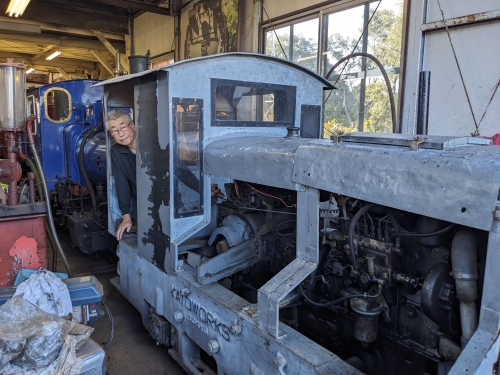
It has been 30 years since the first steam locomotive arrived here.
We brought the locomotive from Taiwan and brought it back to Japan. Starting with that one steam locomotive, various groups began to join in the preservation activities of the light railroads, and eventually they began to collect locomotives scattered all over the country and also brought locomotives that had remained overseas back home.
ーWhat keeps you so passionate about it?ー

One is the love for railroads. Unlike cars, trains are all on the same track. That inconvenience is also kind of nice.
The other thing that makes light railroads so beautiful is that they don't destroy nature. The fact that they don't fight with nature is what makes them so appealing. If there is a river, you bypass it and build a bridge in a narrow part of the river, or you don't smash through a tunnel and take a detour to climb up... I guess I became obsessed with the charm of this kind of railroad. People who were sympathetic to and obsessed with the idea got together and started this activity 50 years ago. I was a high school student at the time, and a senior came to my high school and invited me to join this kind of activity that he was about to start.
ーWhy did you choose to build it at Yume Farm?ー
After having a child, I came to Yume Farm, which was nearby, and found that the entire 3 hectares of land that used to be a campground had been relocated and was now vacant.
I went to the president's office that day and said, "Let me lay the tracks" and he said, "Why don't you try it?” (laughs). I don't think he thought it would be such a big project (laughs). It all started when he was told, "Why don't you try it?".
In retrospect, I think it was a good thing that it started in Narita, because Narita used to have a light rail system, and there was an airport and foreign visitors.
ーWhat is the appeal of light railways?ー
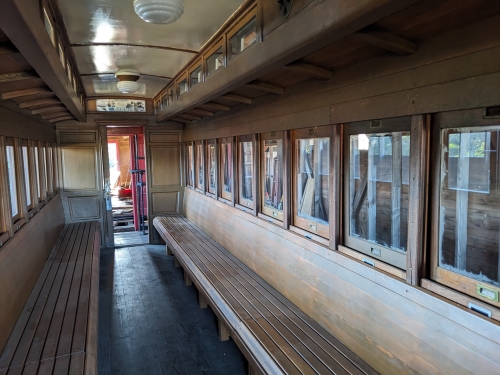
This is a passenger car from the Taisho era (1912-1926), but it recreates the atmosphere of a light railway in the good old days. There is a wooden platform. We offer a special driving experience for our customers.
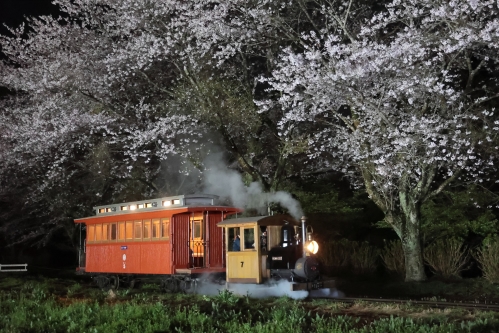
When the steam locomotive pulls, the smoke puffs in through the windows. The smoke is steam, so it doesn't smell. There's gentle light coming in through the light windows, or the wind blowing on the deck.
You can't do that on trains now, can you? All you get is, "Please don't go out on the deck," and "Please don't open the windows."
There are many things in light railroads that enrich this human sensibility, things that are emotional. I now understand that this is the charm of light railways.
ーWhat are your goals for the future?ー
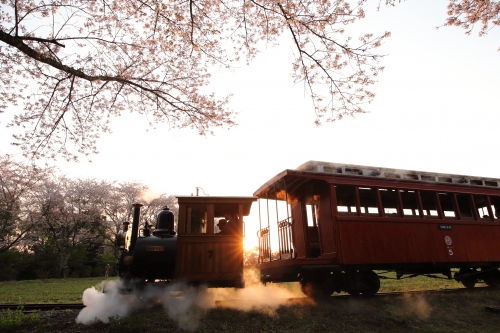
Now that we have expanded our facilities to this point, we are already one step closer to building a museum. That is why we want to build a museum next.
Humans only look at what they understand. There was a time when there were many stray cats around, and the locomotives couldn't compete with them. Even when we lined up the locomotives, people wouldn't look at them, but they'd point their cameras at the cats.
Museums can be seen and understood if there are words and images. That is our goal for the future.
ーFinally, do you have a message for our readers?ー
I'm preoccupied with myself right now, so it's not easy (laughs).
Narita has Shinshoji Temple, a railroad, and satoyama landscape, and it would be fun to go cycling or take a bus to the countryside and walk around. Well, Japan is full of convenience stores, so you will never go hungry (laughs).



